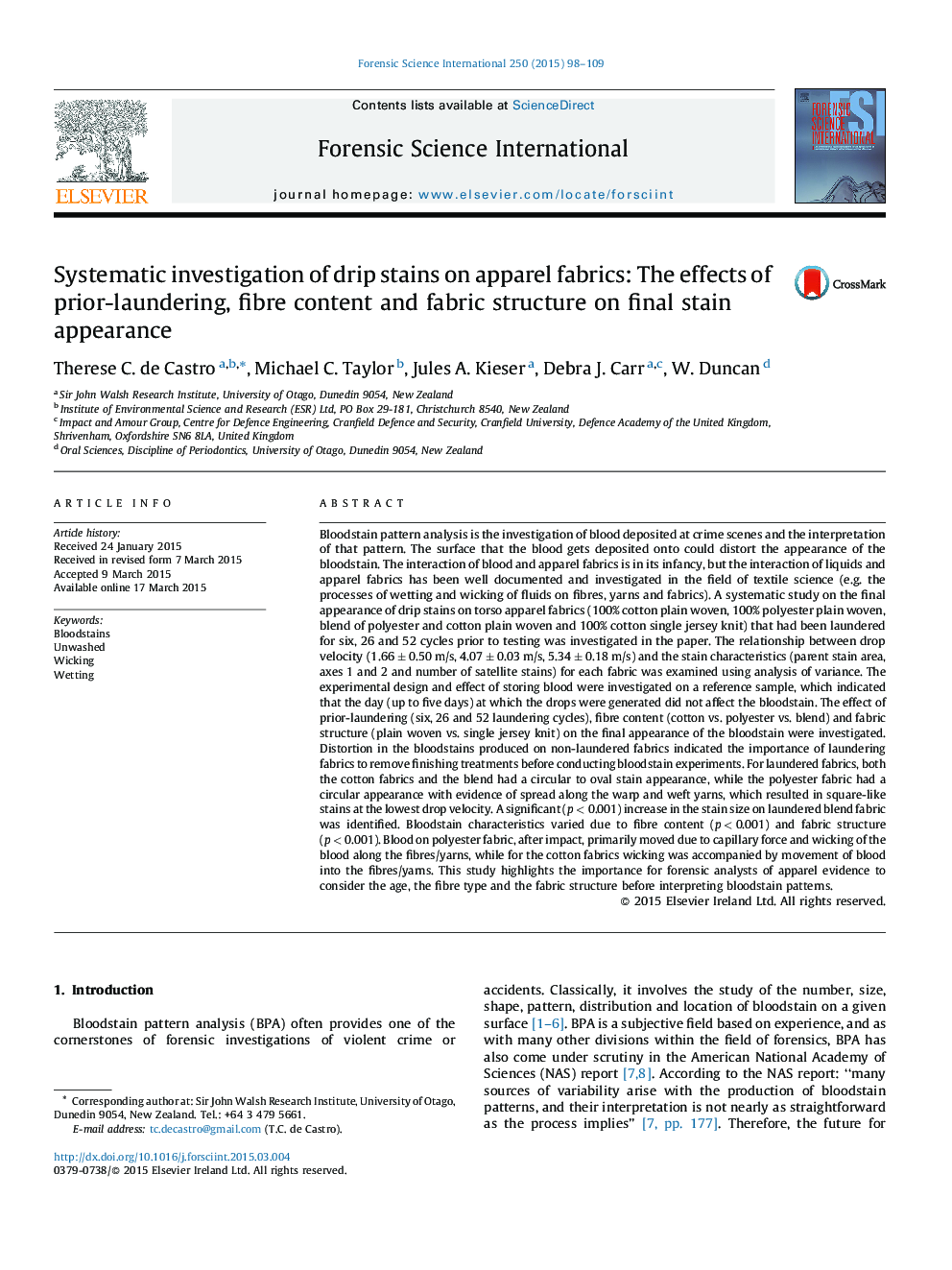| کد مقاله | کد نشریه | سال انتشار | مقاله انگلیسی | نسخه تمام متن |
|---|---|---|---|---|
| 95297 | 160424 | 2015 | 12 صفحه PDF | دانلود رایگان |
• Finishing treatments effect stain formation on non-laundered apparel.
• Prior-laundering changes fabric properties, which may alter stain characteristics.
• Stain characteristics varied due to fibre content and fabric structure.
• Blood–fabric interaction is a complex process of inertia, wetting and wicking.
Bloodstain pattern analysis is the investigation of blood deposited at crime scenes and the interpretation of that pattern. The surface that the blood gets deposited onto could distort the appearance of the bloodstain. The interaction of blood and apparel fabrics is in its infancy, but the interaction of liquids and apparel fabrics has been well documented and investigated in the field of textile science (e.g. the processes of wetting and wicking of fluids on fibres, yarns and fabrics). A systematic study on the final appearance of drip stains on torso apparel fabrics (100% cotton plain woven, 100% polyester plain woven, blend of polyester and cotton plain woven and 100% cotton single jersey knit) that had been laundered for six, 26 and 52 cycles prior to testing was investigated in the paper. The relationship between drop velocity (1.66 ± 0.50 m/s, 4.07 ± 0.03 m/s, 5.34 ± 0.18 m/s) and the stain characteristics (parent stain area, axes 1 and 2 and number of satellite stains) for each fabric was examined using analysis of variance. The experimental design and effect of storing blood were investigated on a reference sample, which indicated that the day (up to five days) at which the drops were generated did not affect the bloodstain. The effect of prior-laundering (six, 26 and 52 laundering cycles), fibre content (cotton vs. polyester vs. blend) and fabric structure (plain woven vs. single jersey knit) on the final appearance of the bloodstain were investigated. Distortion in the bloodstains produced on non-laundered fabrics indicated the importance of laundering fabrics to remove finishing treatments before conducting bloodstain experiments. For laundered fabrics, both the cotton fabrics and the blend had a circular to oval stain appearance, while the polyester fabric had a circular appearance with evidence of spread along the warp and weft yarns, which resulted in square-like stains at the lowest drop velocity. A significant (p < 0.001) increase in the stain size on laundered blend fabric was identified. Bloodstain characteristics varied due to fibre content (p < 0.001) and fabric structure (p < 0.001). Blood on polyester fabric, after impact, primarily moved due to capillary force and wicking of the blood along the fibres/yarns, while for the cotton fabrics wicking was accompanied by movement of blood into the fibres/yarns. This study highlights the importance for forensic analysts of apparel evidence to consider the age, the fibre type and the fabric structure before interpreting bloodstain patterns.
Journal: Forensic Science International - Volume 250, May 2015, Pages 98–109
